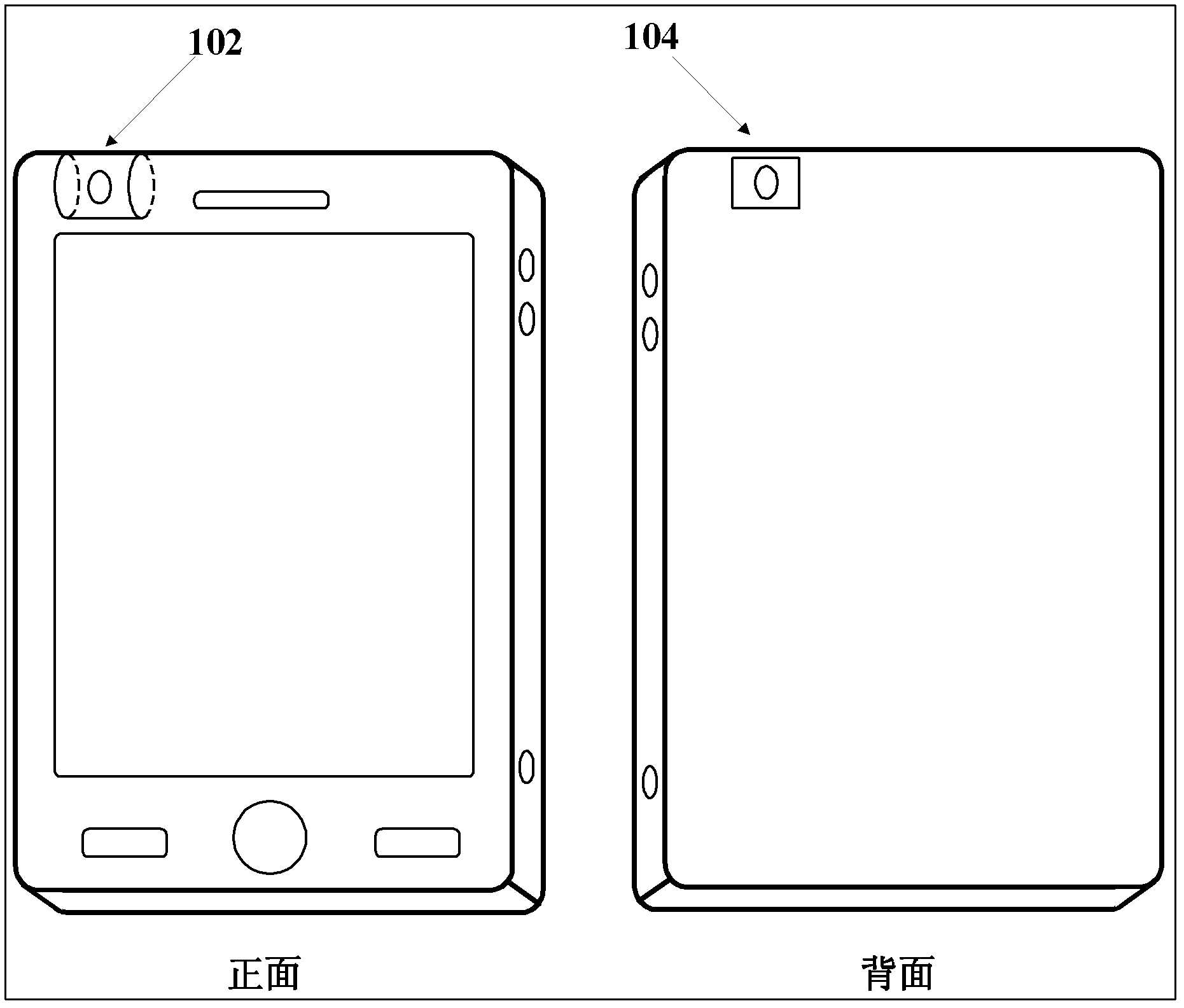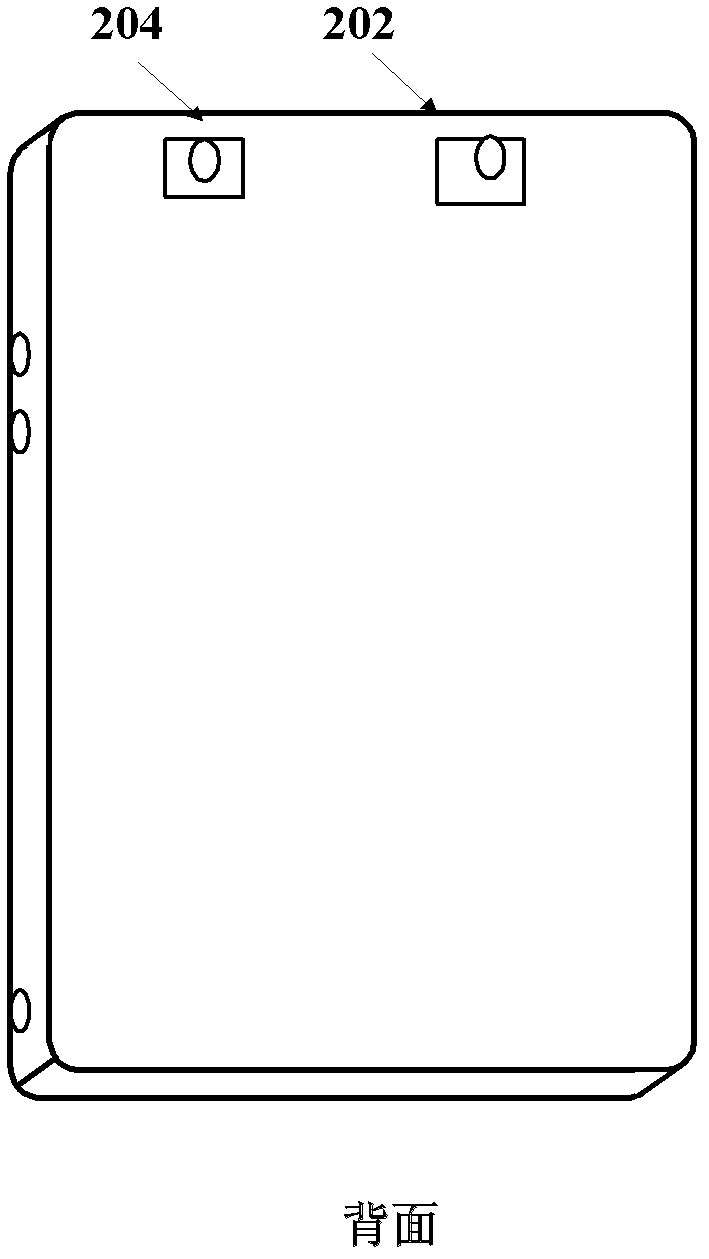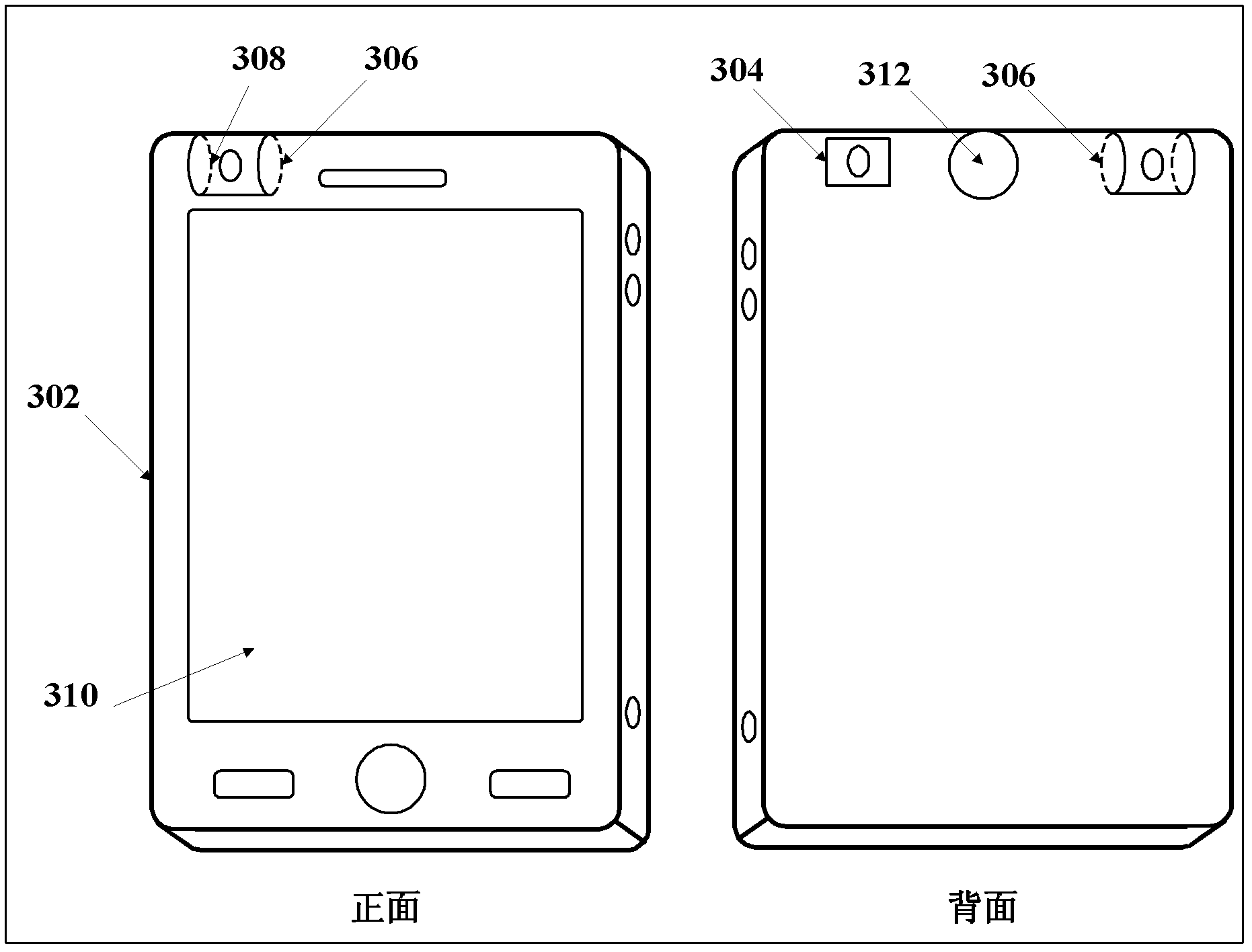Mobile phone
A mobile phone and main body technology, applied in the direction of telephone structure, branch equipment, electrical components, etc., can solve the problem that video calls and stereo image shooting cannot be realized at the same time, and achieve the effect of improving utilization rate
- Summary
- Abstract
- Description
- Claims
- Application Information
AI Technical Summary
Problems solved by technology
Method used
Image
Examples
Embodiment Construction
[0029] Hereinafter, the present invention will be described in detail with reference to the drawings and examples.
[0030] like image 3 As shown, the present invention provides a mobile phone capable of stereo photography, which includes:
[0031] 1) The mobile phone main body 302, including the display screen 310;
[0032] 2) The rear camera 304 is located at the back of the mobile phone main body 302;
[0033] 3) The front camera 306 is located on the front of the mobile phone main body 302, and is connected to the mobile phone main body 302 through a rotating part 308, wherein the rotating part 308 has a rotation start position on the front side of the mobile phone main body 302 and a rotation end position on the back side of the mobile phone main body 302 , the front camera 306 can rotate between a rotation start position and a rotation end position through the rotation component 308 .
[0034] Compared with the prior art, the above-mentioned embodiments of the presen...
PUM
 Login to View More
Login to View More Abstract
Description
Claims
Application Information
 Login to View More
Login to View More - R&D
- Intellectual Property
- Life Sciences
- Materials
- Tech Scout
- Unparalleled Data Quality
- Higher Quality Content
- 60% Fewer Hallucinations
Browse by: Latest US Patents, China's latest patents, Technical Efficacy Thesaurus, Application Domain, Technology Topic, Popular Technical Reports.
© 2025 PatSnap. All rights reserved.Legal|Privacy policy|Modern Slavery Act Transparency Statement|Sitemap|About US| Contact US: help@patsnap.com



